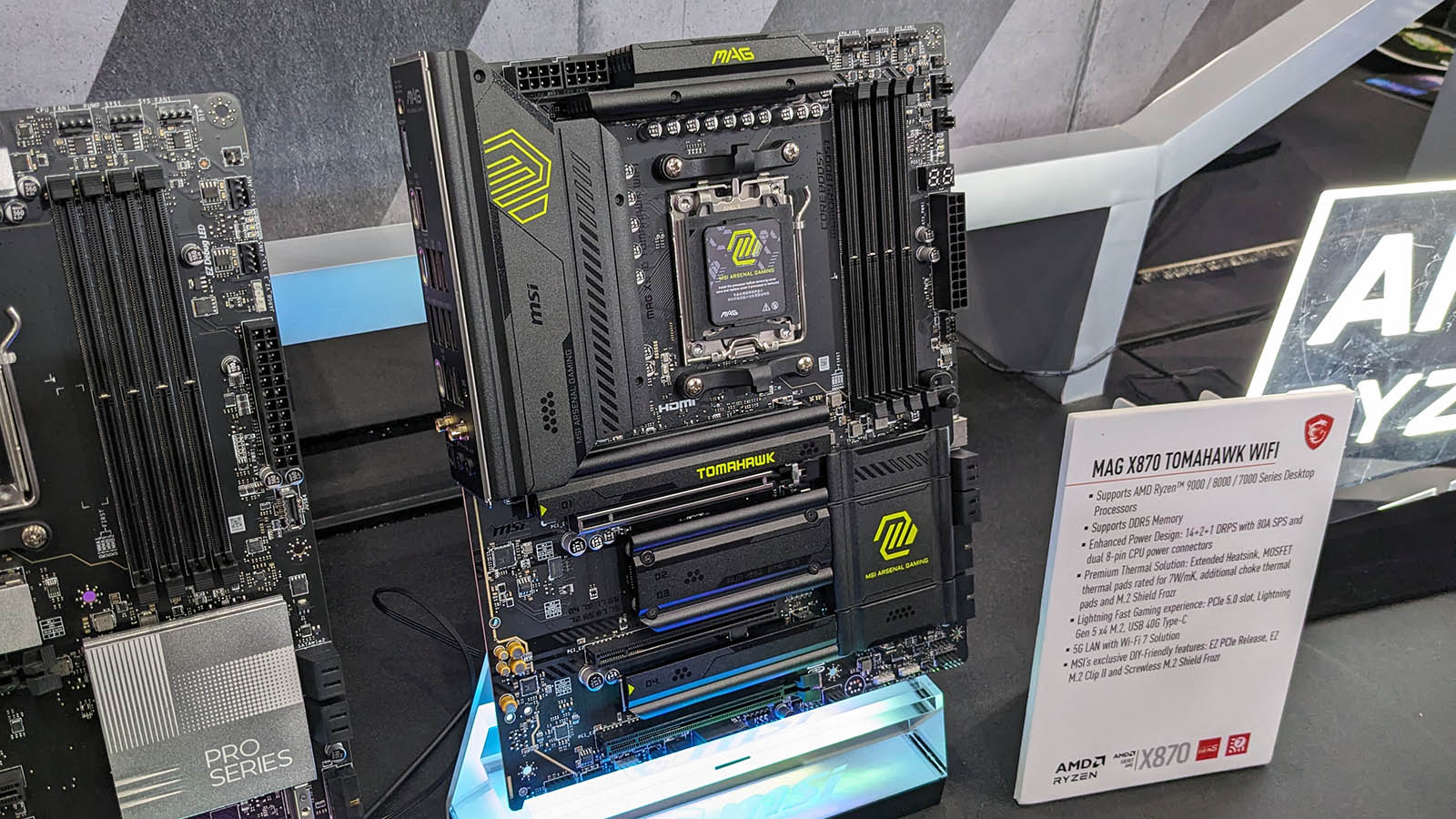
MSI has unveiled its upcoming X870 and X870E motherboard range at Gamescom 2024. Cowcotland visited MSI's booth and noticed an interesting addition to these boards. It seems all of them featured an 8-pin PCIe power connector located at the bottom of the boards. But why, you might ask?
Cowcotland reports these connectors are included to handle the demands of next generation Nvidia and AMD graphics cards. That indicates some of these cards are likely to consume serious amounts of power. Assuming such cards are a matter of months away from seeing the light of day, MSI is likely already aware of at least the basic requirements of such cards.
Secondary power connectors are not a new feature. They tend to be found on high-end or overclocking-focused motherboards. Their purpose is to provide extra juice to high-power graphics cards, but seeing them included on more mainstream options is interesting indeed.
A standard PCIe x16 slot can provide up to 75W of power. If you add another 150W from an 8-pin connector, you're looking at 225W from the motherboard alone. Now if you add up to 600W from a 12V-2x6 or 12VHPWR connector, the math suggests 800W or more is possible.

Best CPU for gaming: The top chips from Intel and AMD.
Best gaming motherboard: The right boards.
Best graphics card: Your perfect pixel-pusher awaits.
Best SSD for gaming: Get into the game ahead of the rest.
Of course, that would only apply to flagship tier cards like an RTX 5090, but then its also possible to install a pair of less demanding cards for things like productivity or AI workloads, and that's a scenario where the 8-pin connector is also beneficial. Having a pair of cards pulling 150W from two PCIe slots alone would put a lot of strain on the motherboard, so a bit of backup power makes sense.
Still, it seems like the power consumption and TDPs of flagship graphics card are still rising. A card like the RTX 4090 pulls up to 450W, or higher for overclocked models. I'd put a bet on the fact that Nvidia's next gen monster will not come in lower than that. A 500W+ TDP for a standard RTX 5090 is a definite possibility if history is any indicator.
Other manufacturers are not including 8-pin connectors across their ranges, though enthusiast boards like the Asus Crosshair X870E Hero does include one. Is MSI just being cautious, or will next gen GPUs really need such headroom? It'll be interesting to see if more boards will include the additional connector, particularly when Intel's Z890 boards officially break cover in the weeks ahead.







